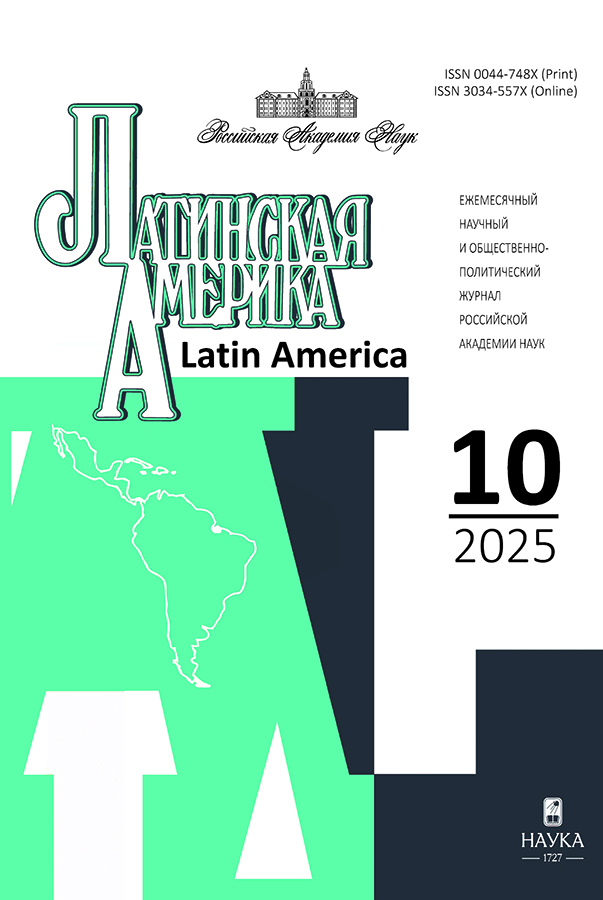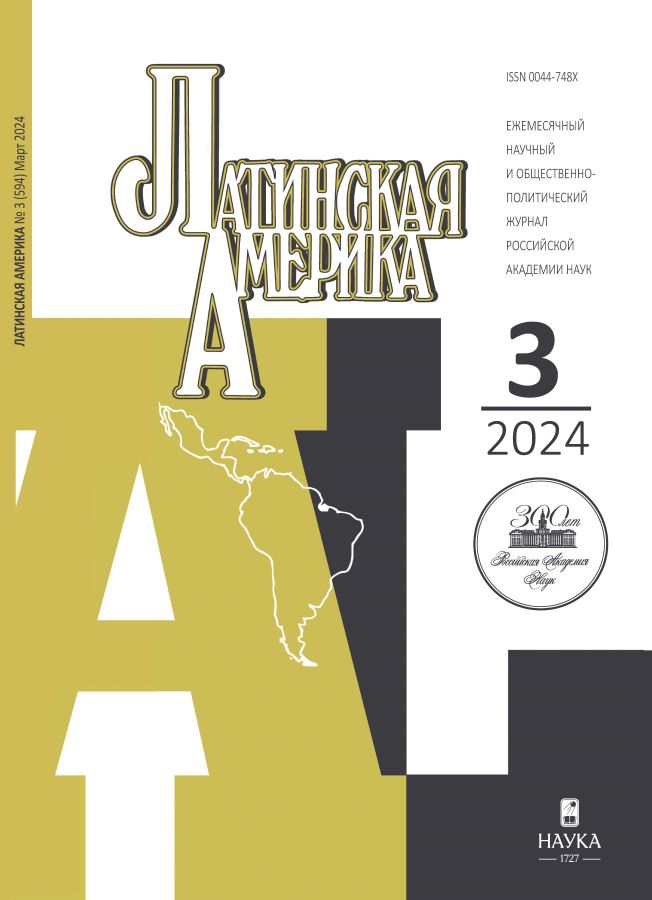Presidential elections in Ecuador: progress, analysis, results
- Authors: Galibina-Lebedeva E.S.1
-
Affiliations:
- Institute for Latin America, RAS
- Issue: No 3 (2024)
- Pages: 59-73
- Section: Policy
- URL: https://rjmseer.com/0044-748X/article/view/667953
- DOI: https://doi.org/10.31857/S0044748X24030045
- ID: 667953
Cite item
Abstract
In mid-October 2023, the electoral cycle ended in Ecuador. Its results were the election of the youngest president in the country's history, center-right Daniel Noboa. With a difference of less than four percent, Noboa managed to defeat her opponent, ‘correist’ Luisa Gonzalez. The parliamentary elections demonstrated that today none of the political forces can propose a program supported by the major part of society, and therefore none of the factions received an absolute parliamentary majority. This made three influential forces – the Civil Revolution, the Social Christian Party and the ADN presidential party – to create a situational coalition to solve the primary problems in the country: reducing the high level of violence and providing employment for the population. However, if this coalition falls apart, there is a good chance that President Noboa will repeat the political fate of his predecessor. The very conduct of this election campaign became the implementation in the political field of articles 138 and 140 known as muerte cruzada (‘cross death’) implementation in the political field, meaning the mechanism for president impeaching and simultaneously dissolving Parliament, after which early general elections are called. The election campaign took place under conditions of a state of emergency declared in the country on the eve of the first round of elections due to the murder of one of the presidential candidates. The use of the historical-comparative method in the article allows us to compare the political landscape around the previous and new Ecuadorian leaders and identify the institutional political structures features. And the historical-systemic method allows us to analyze the causes of political turbulence and Ecuadorian society polarization, and conflict-consensual development relations between the president and parliament and to predict political steps of the new president.
About the authors
Elena S. Galibina-Lebedeva
Institute for Latin America, RAS
Email: elenagal@yandex.ru
ORCID iD: 0009-0009-5489-9166
Cand. Sci. (History), Senior researcher of Political studies center B. Ordynka st. 21, 115035 Moscow, Russian Federation
References
- Чавес Савала П. Институциональная эволюция политической системы Эквадора в контексте «левого поворота». Автореферат на соискание ученой степени канд. полит. наук. М.: ИЛА РАН, 2019, 35 c.
- Ивановский З.В. Латинская Америка в новом тысячелетии. Социальная панорама и динамика политических процессов. Латинская Америка. М., 2019, №8, сс.6-22.
- ВВП и внешний долг Эквадора. Источник статистической информации Countrymeters. Available at: https://countrymeters.info/ru/Ecuador/economy (accessed 15.12.2023).
- Галибина-Лебедева Е.С. Преследование Джулиана Ассанжа как отражение финансовой зависимости Эквадора от США. Латинская Америка. М., 2019, №9, cc. 38-50.
- Пятаков А.Н. Феномен социальных протестов в Латинской Америке в 2019 г. Глобальный контекст и эквадорский case-study. Вестник МГУ. Международные отношения и мировая политика. 2020, т. 12, №2, сс. 7-43.
- Галибина-Лебедева Е.С., Ивановский З.В. Эквадор: политика правительства и социальные протесты. Латинская Америка: политический ландшафт на фоне турбулентности. Коллективная монография. Отв. ред. З.В. Ивановский. М.: ИЛА РАН, 2022, сс.183-190.
- Окунева Л.С. Латинская Америка пришла в движение: в чем смысл социальных протестов октября 2019 года? Латинская Америка. М., 2020, №1, сс. 8-21.
- Официальный сайт Национального избирательного совета Эквадора. Available at: https://elecciones2023v2.cne.gob.ec/ (accessed 17.10.2023).
- Официальный сайт движения Национальное демократическое действие. Available at: https://adn-ecuador.org/ (accessed 10.09.2023).
- Официальный сайт кандидата в президенты Даниэля Нобоа. Available at: https://danielnoboaazin.com/biografia/ (accessed 12.08.2023).
- Официальный сайт кандидата в президенты Луисы Гонсалес. Available at: https://www.luisapresidenta.com/#biografia (accessed 15.10.2023).
- Официальный сайт движения Гражданская революция. Available at: https://revolucionciudadana.com.ec/ (accessed 15.08.2023).
- План правительства Луисы Гонсалес. Available at: https://www.luisapresidenta. com/#plandegobierno (accessed 15.10.2023).
- Центр социальных исследований Comunicaliza. Available at: https://www.ascoa. org/sites/default/files/imce_files/Encuesta%20Nacional%20-%2012.08.2023%20vy.pdf (accessed 16.08.2023).
- Центр исследований и данных Cetados. Available at: https://cedatos.com/2023/10/05/cedatos-ultima-informacion-sobre-intencion-de-voto-votosvalidos-al-5-de-octubre-de-2023-daniel-noboa-561-luisa-gonzalez-439-de-votos-validosindecision-al-22/ (accessed 12.10.2023).
- Vamos a generar gobernabilidad para attender los problemas urgentes de la gente: Henry Kronfle. Официальный сайт Национальной Ассамблеи Эквадора. Available at: https://www.asambleanacional.gob.ec/es/noticia/90330-vamos-generar-gobernabilidad-paraatender-los-problemas (accessed 22.12.2023).
- Comisiones especializadas permanents y ocosionales. Официальный сайт Национальной Ассамблеи Эквадора. Available at: https://www.asambleanacional.gob.ec/es/asamblea/comisiones (accessed 22.12.2023).
- Воротникова Т.А. Левые режимы в Боливии и Эквадоре: десять отличий. Латинская Америка. М., 2019, № 11, сс. 15-20.
- Шинкаренко А.А. Эволюция экологического дискурса в Латинской Америке: традиции и новации. Латинская Америка. М., 2021, № 2, сс. 6-16.
- Шинкаренко А.А. Эквадор на пути к постэкстрактивистской реальности. Латинская Америка. М., 2019, № 3, сс. 38–49.
- Daniel Noboa se reunió con representantes del BID, del FMI y del Banco Mundial, en EE.UU. Forbes. Available at: https://www.forbes.com.ec/today/los-detalles-extrana-sentenciasufrio-joven-haber-hackeado-materiales-ineditos-gta-vi-n45517 (accessed 21.12.2021).
- Николаев Ю.В. Внешнеполитическая линия Эквадора после президентских выборов 2021 г. Латинская Америка. М., 2023, № 3, сс. 73-89.
- Votaciones del Pleno, Año 2023. Официальный сайт Национальной Ассамблеи Эквадора. Available at: http://documentacion.asambleanacional.gob.ec/alfresco/webdav/Documentos%20Web/Votaciones%20del%20Pleno/Año%202023 (accessed 22.12.2023).
Supplementary files










